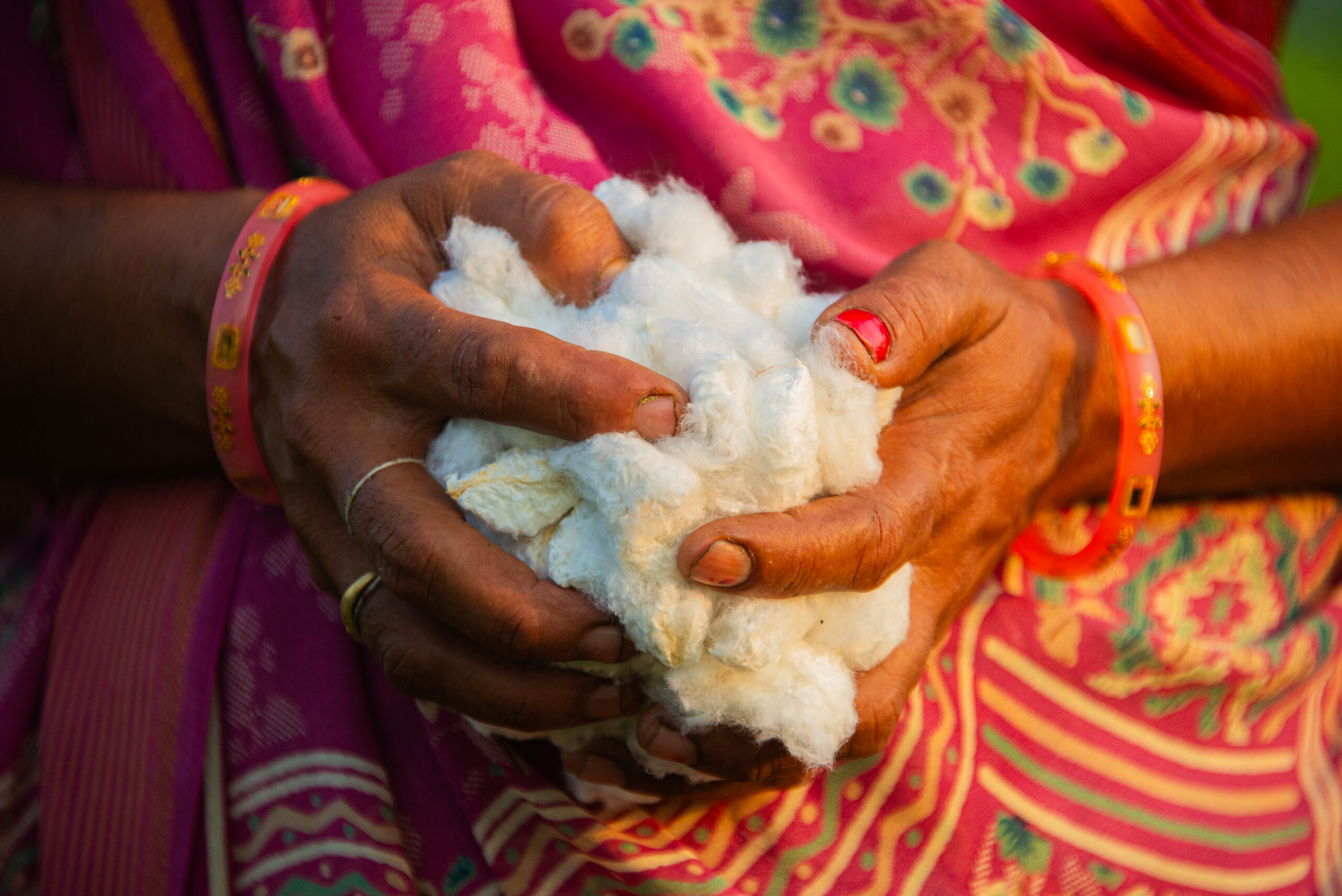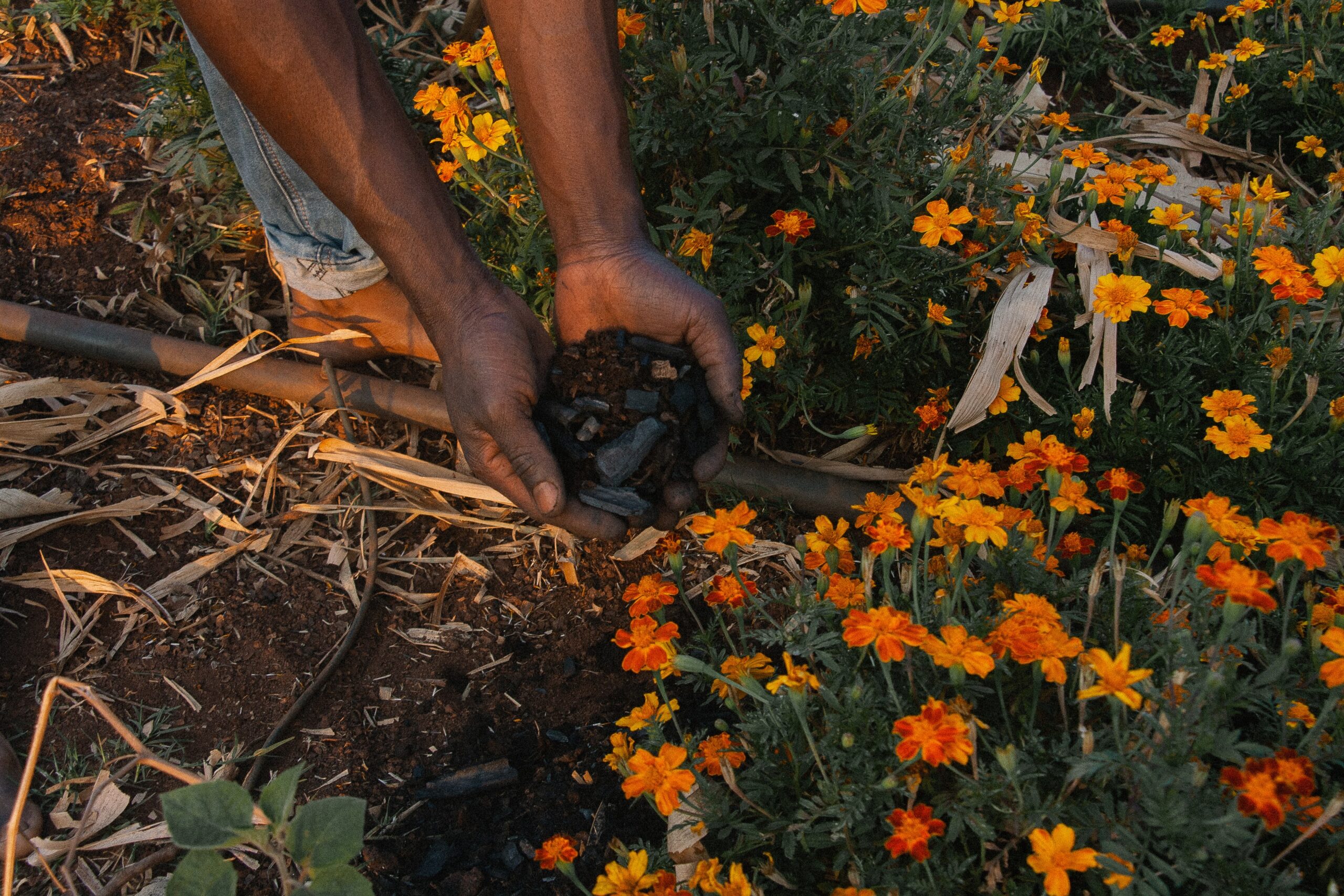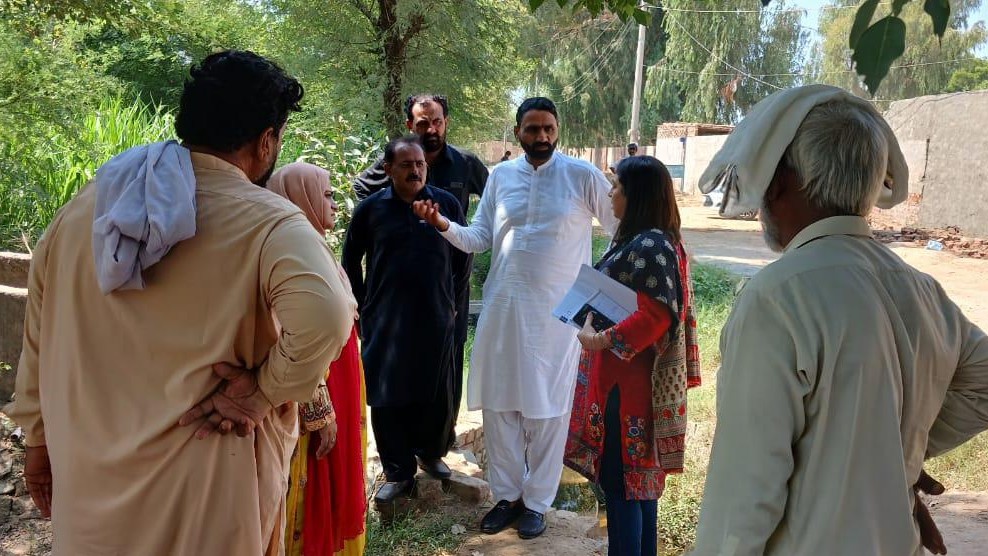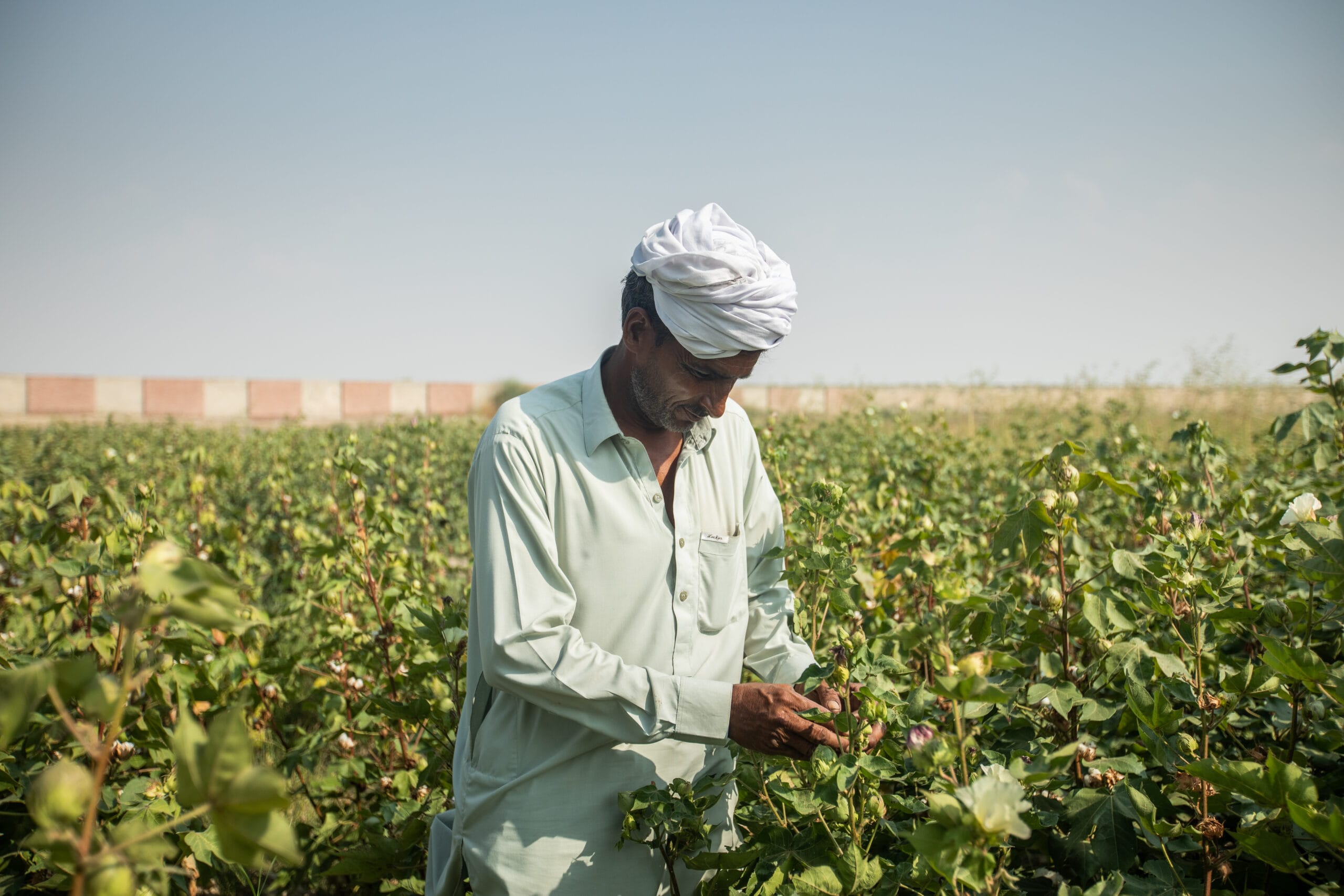At the Better Cotton Initiative (BCI), we are committed to improving the livelihoods of cotton farmers. In our 2030 Strategy, we set a clear goal: to increase the net income and resilience of two million cotton smallholders and workers worldwide by the end of the decade.
Helping cotton communities survive and thrive starts with people. When it comes to cotton farming, these communities are overwhelmingly made up of more than 90% smallholder farmers, farming on less than two hectares of land.
For these smallholders, income is dependent on many factors which are out of their hands, from weather and market conditions to pests and diseases. Smallholder farmers often grapple with limited access to capital and are at greater risk of exposure to risks from negative climate change impacts, water scarcity, volatile prices and costly inputs. This in turn increases the risk of labour rights violations and practices such as child labour.
This is why it is so important that we work to foster cotton production that generates shared value while preserving and restoring natural resources.
How is BCI Working to Improve Farmer Livelihoods?
Our 2030 Strategy laid out our ten-year plan to make cotton better for the farmers who produce it and for all those who have a stake in the future of the sector, establishing five Impact Targets to measure and report on. One of these key targets is focused on Sustainable Livelihoods – by 2030, our target is to sustainably increase the net income and resilience of two million cotton farmers and workers.
To drive progress towards this target, we have added a dedicated Sustainable Livelihoods Principle to our revised Principles and Criteria, which is effective for the 2024/25 cotton season onwards.
This new addition to our P&C is specifically designed to support smallholders and medium farms within the cotton farming sector. It comprises two crucial indicators that serve as a guide on our path towards sustainable livelihoods for cotton farmers. These indicators ask Producer Units to assess the primary obstacles to increasing income and resilience and analyse available resources through a consultative approach with farmers and their communities, before taking measures that are tailored to the local context to improve and monitor livelihood development over an extended period.
We are also developing a comprehensive Sustainable Livelihoods Approach. This holistic approach, to be published by the end of 2024, will outline the steps BCI will take to improve living standards for cotton farming communities and workers, hereby acknowledging that cotton farming systems encompass other crops and additional income streams that also require attention.
The approach outlines actions at three levels – farm, community and structural – and in three dimensions – production, purchasing practices and creating enabling environments. It will help us to unify our stakeholders, create a common language for what we mean by ‘sustainable livelihoods’, and ultimately, drive tangible change across the cotton sector.
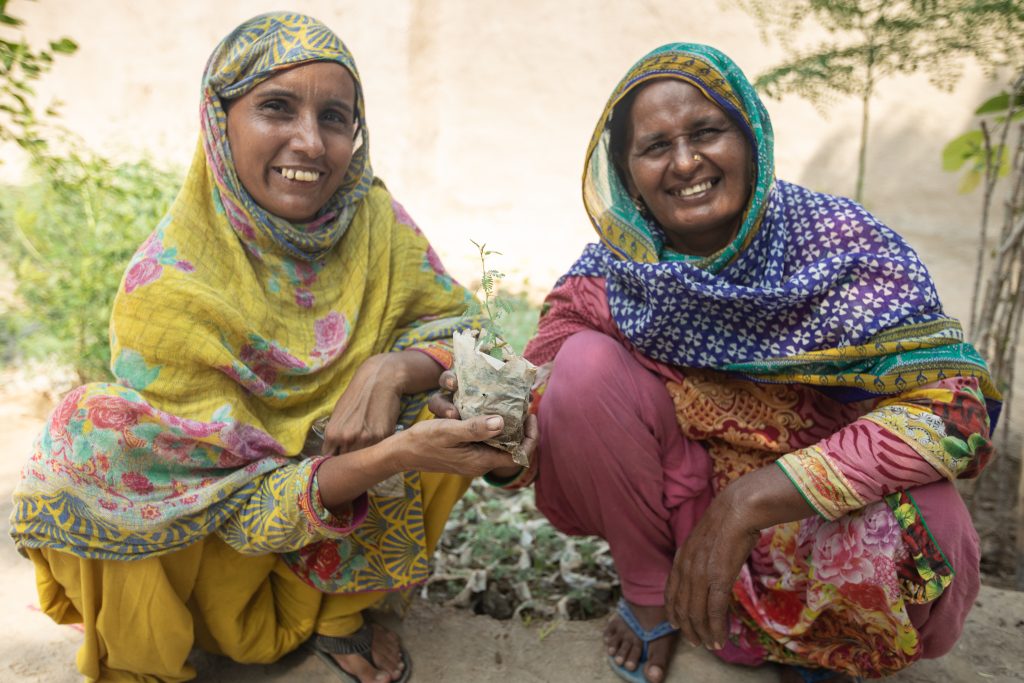

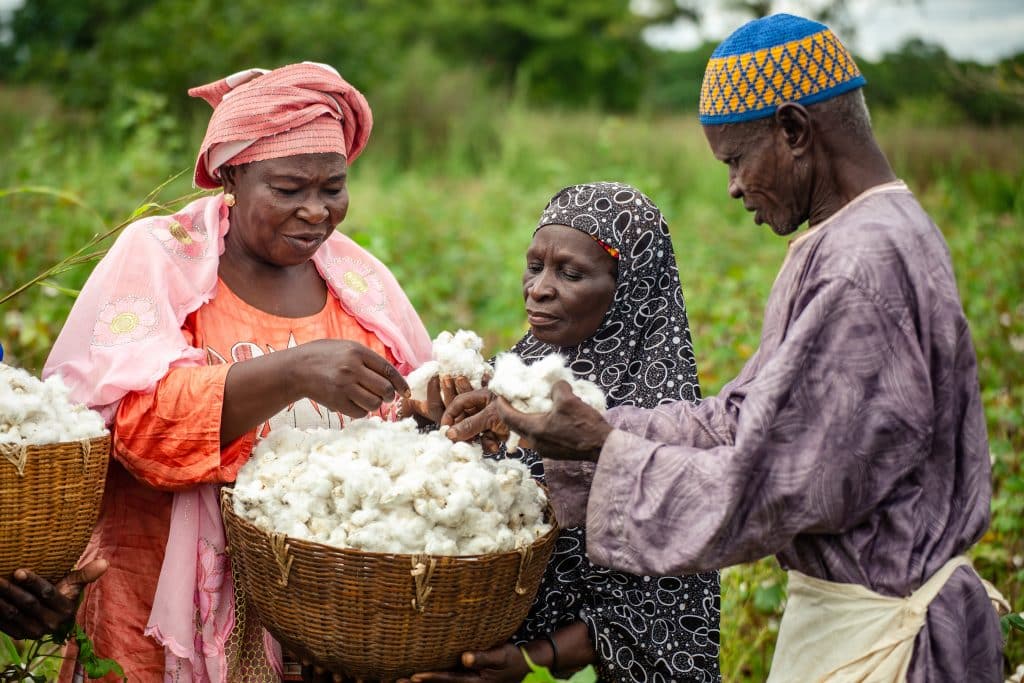

Partnerships
As we work towards realising our livelihoods goals, our partnership with IDH has been instrumental. The organisation collaborates closely with governments, businesses and local communities to promote sustainable value chains, and has created a Living Income Roadmap which guides companies on how to turn commitments into action. BCI’s plan of action is based on this Roadmap.
BCI has also joined the IDH Living Income Business Action Committee, which will allow us to exchange insights with initiatives in other sectors on living income strategies.
As part of our partnership, we are identifying the living income gap for smallholder cotton farming households in two states in India (Maharashtra and Telangana) where BCI is currently active. We have also conducted a resilience study in India to understand the resilience capacities of households on economic, social, and environmental aspects. Below you will find a summary of this study. If you’d like to request the full report, please click here.
Living Income Project: Insights From India – Summary
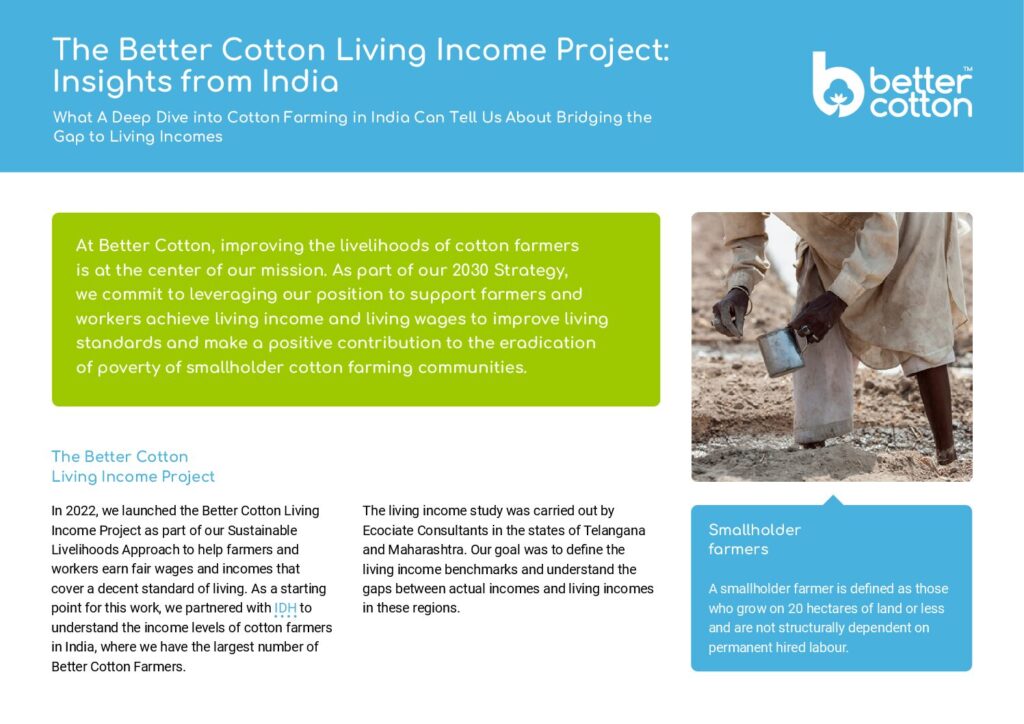

The project will work to strengthen BCI Programme Partners’ awareness of these topics through capacity strengthening and training, and we are focusing on modelling scenarios to develop targeted, evidence-based interventions and scaling up similar studies to other regions.
BCI also actively engages in the Living Income Community of Practice, an alliance of partners focused on improving smallholder incomes by increasing understanding of living income gaps and identifying strategies to close them.








































